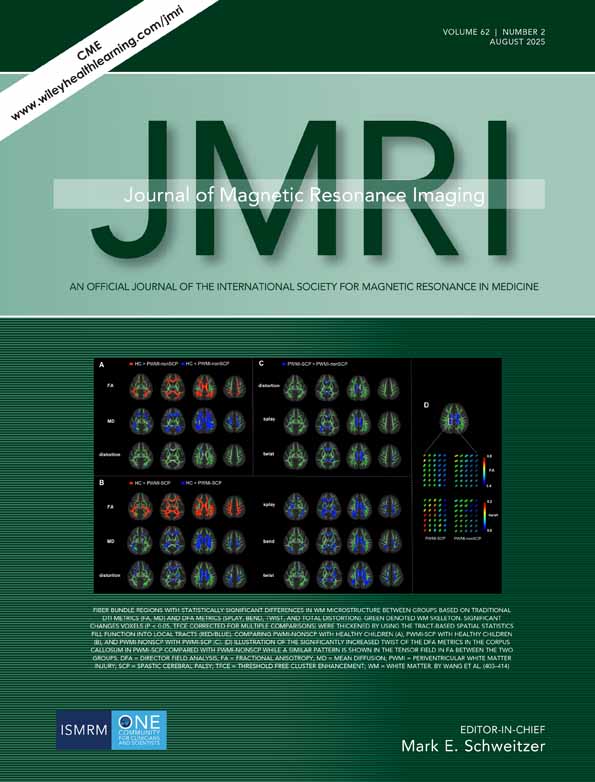Correction of proton resonance frequency shift temperature maps for magnetic field disturbances using fat signal
Abstract
Purpose
To improve the immunity of the proton resonance frequency shift (PRFS) method of MRI temperature mapping against magnetic field disturbances. Since PRFS is a phase-sensitive method, it misinterprets magnetic field disturbances as artifact temperature changes. If not corrected, the resulting temperature artifacts can completely obscure the true temperature estimation, especially if the temperature elevations are small.
Materials and Methods
Since the fat protons experience the same magnetic field disturbances as the water protons, but no temperature-related frequency shift, the fat signal has been used for correcting PRFS temperature maps for the disturbances. A simple correction method is proposed that has either better compensation capability than the phase correction methods previously reported or higher spatial and temporal resolution than the spectroscopic correction methods previously reported. The evaluated method is based on the utilization of several gradient and spin echoes acquired within one repetition interval with water- and fat-selective scans.
Results
In a series of phantom experiments, the improved method is shown to enable the reconstruction of accurate temperature maps in spite of interscan motion, suboptimal fat–water separation, and a wide range of magnetic field disturbances.
Conclusion
Our approach can be used for the guidance of thermal therapies involving tissues containing fat or surrounded by fat. J. Magn. Reson. Imaging 2007. © 2007 Wiley-Liss, Inc.




